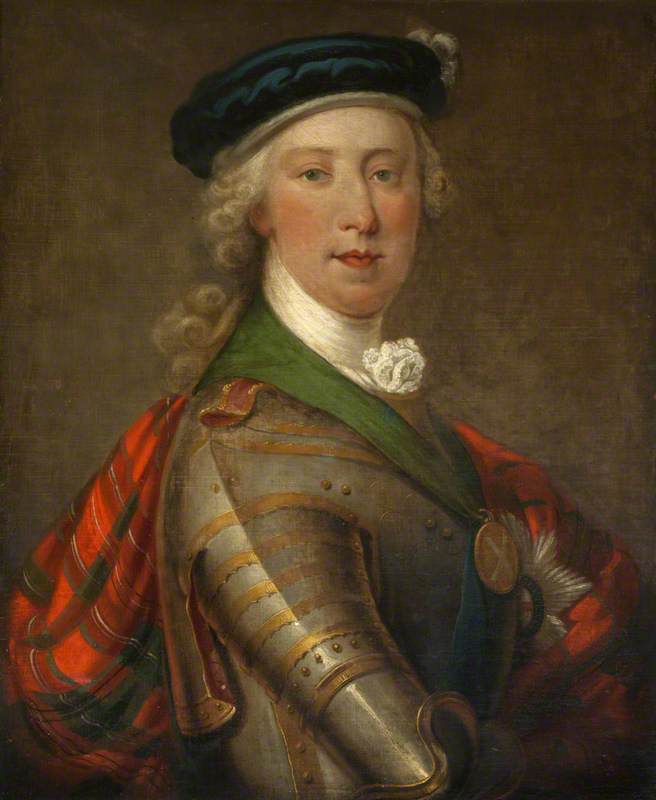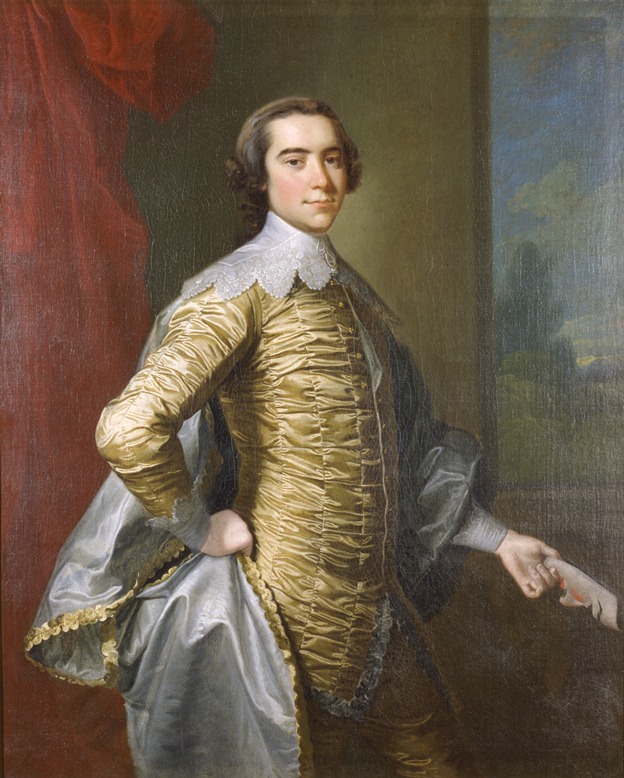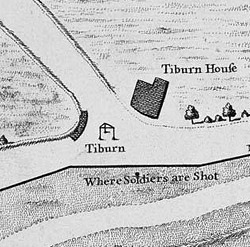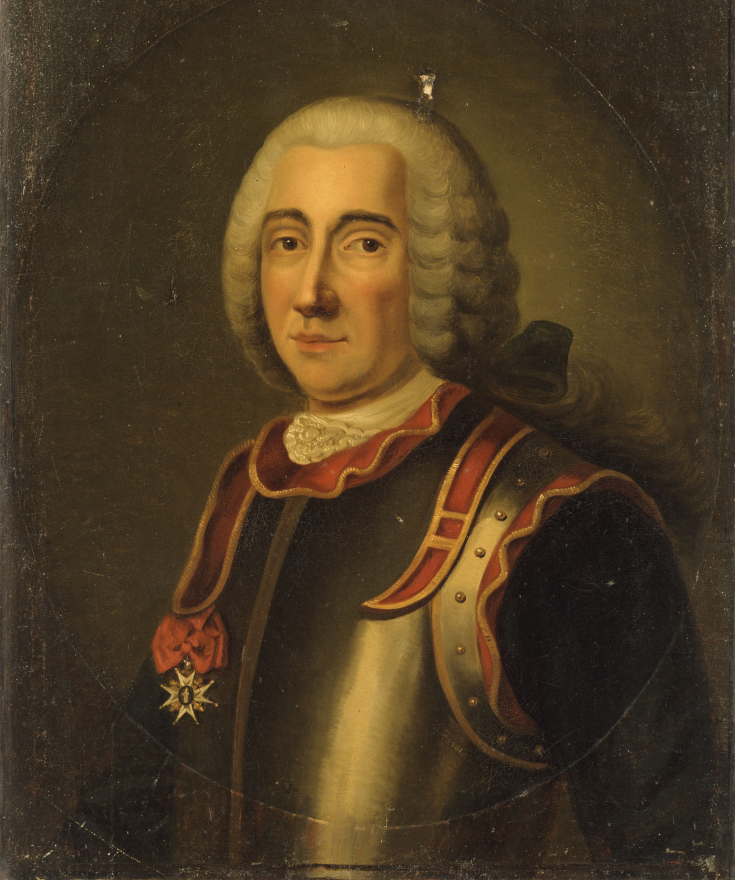|
Donald Cameron Of Lochiel
Donald Cameron of Lochiel (c. 1695 – 1748), popularly known as the Gentle Lochiel, was a Scottish Jacobite and hereditary chief of Clan Cameron, traditionally loyal to the exiled House of Stuart. His father John was permanently exiled after the 1715 Rising and when his grandfather Sir Ewen Cameron died in 1719, Donald assumed his duties as ''Lochiel'' of the Camerons. Despite considerable misgivings, Lochiel's support for Prince Charles Edward Stuart proved pivotal in the early stages of the 1745 Jacobite Rising. The Camerons held a strategic importance out of proportion to numbers due to the compact nature of their lands and ability to act as a cohesive unit; in contrast, many of their rivals were scattered across different areas and riven by internal feuds. Defeated and wounded at the Battle of Culloden, Lochiel and Prince Charles escaped to France, fleeing from Lochaber in late 1746, in company with other senior Jacobites. He was appointed Colonel of the Régiment d'A ... [...More Info...] [...Related Items...] OR: [Wikipedia] [Google] [Baidu] |
Achnacarry
Achnacarry ( gd, Achadh na Cairidh) is a hamlet, private estate, and a castle in the Lochaber region of the Highlands, Scotland. It occupies a strategic position on an isthmus between Loch Lochy to the east, and Loch Arkaig to the west. Achnacarry has a long association with Clan Cameron: Sir Ewen Cameron of Lochiel built the original castle in 1655. This was destroyed by government troops led by the Duke of Cumberland after the Battle of Culloden. However, "New Achnacarry" was built near the same site in Scottish Baronial style in 1802. In the Second World War, it housed the Commando Basic Training Centre and the area retains close ties to British Commandos, the United States Army Rangers and similar units from other allied nations. In 1928 the Achnacarry Agreement was signed, an early attempt to set petroleum production quotas. Geography Achnacarry is not far from the village of Spean Bridge and about north of the town of Fort William. It has been described by Queen V ... [...More Info...] [...Related Items...] OR: [Wikipedia] [Google] [Baidu] |
Charles Edward Stuart
Charles Edward Louis John Sylvester Maria Casimir Stuart (20 December 1720 – 30 January 1788) was the elder son of James Francis Edward Stuart, grandson of James II and VII, and the Stuart claimant to the thrones of England, Scotland and Ireland from 1766 as Charles III. During his lifetime, he was also known as "the Young Pretender" and "the Young Chevalier"; in popular memory, he is known as Bonnie Prince Charlie. Born in Rome to the exiled Stuart court, he spent much of his early and later life in Italy. In 1744, he travelled to France to take part in a planned invasion to restore the Stuart monarchy under his father. When the French fleet was partly wrecked by storms, Charles resolved to proceed to Scotland following discussion with leading Jacobites. This resulted in Charles landing by ship on the west coast of Scotland, leading to the Jacobite rising of 1745. The Jacobite forces under Charles initially achieved several victories in the field, including the Battle ... [...More Info...] [...Related Items...] OR: [Wikipedia] [Google] [Baidu] |
Fort William And Ben Nevis, Scotland-LCCN2001705996
A fortification is a military construction or building designed for the defense of territories in warfare, and is also used to establish rule in a region during peacetime. The term is derived from Latin ''fortis'' ("strong") and ''facere'' ("to make"). From very early history to modern times, defensive walls have often been necessary for cities to survive in an ever-changing world of invasion and conquest. Some settlements in the Indus Valley civilization were the first small cities to be fortified. In ancient Greece, large stone walls had been built in Mycenaean Greece, such as the ancient site of Mycenae (famous for the huge stone blocks of its ' cyclopean' walls). A Greek '' phrourion'' was a fortified collection of buildings used as a military garrison, and is the equivalent of the Roman castellum or English fortress. These constructions mainly served the purpose of a watch tower, to guard certain roads, passes, and borders. Though smaller than a real fortress, they ... [...More Info...] [...Related Items...] OR: [Wikipedia] [Google] [Baidu] |
Clan Campbell
Clan Campbell ( gd, Na Caimbeulaich ) is a Highland Scottish clan, historically one of the largest and most powerful of the Highland clans. The Clan Campbell lands are in Argyll and within their lands lies Ben Cruachan. The chief of the clan became the Earl and later Duke of Argyll. History Origins In traditional genealogies of the Clan Campbell, the clan's origins are placed amongst the ancient Britons of Strathclyde; the earliest Campbell in written records is Gillespie who is recorded in 1263. Early grants to Gillespie and his relations were almost all in east-central Scotland, but the family's connection with Argyll came some generations before, when a Campbell married the heiress of the O'Duines and she brought with her the Lordship of Loch Awe. Because of this the early clan name was ''Clan O' Duine'' and this was later supplanted by the style ''Clann Diarmaid''. This name came from a fancied connection to ''Diarmid the Boar'', a great hero from early Celtic m ... [...More Info...] [...Related Items...] OR: [Wikipedia] [Google] [Baidu] |
Jamaica
Jamaica (; ) is an island country situated in the Caribbean Sea. Spanning in area, it is the third-largest island of the Greater Antilles and the Caribbean (after Cuba and Hispaniola). Jamaica lies about south of Cuba, and west of Hispaniola (the island containing the countries of Haiti and the Dominican Republic); the British Overseas Territory of the Cayman Islands lies some to the north-west. Originally inhabited by the indigenous Taíno peoples, the island came under Spanish rule following the arrival of Christopher Columbus in 1494. Many of the indigenous people either were killed or died of diseases, after which the Spanish brought large numbers of African slaves to Jamaica as labourers. The island remained a possession of Spain until 1655, when England (later Great Britain) conquered it, renaming it ''Jamaica''. Under British colonial rule Jamaica became a leading sugar exporter, with a plantation economy dependent on the African slaves and later their descenda ... [...More Info...] [...Related Items...] OR: [Wikipedia] [Google] [Baidu] |
Planter Class
The planter class, known alternatively in the United States as the Southern aristocracy, was a racial and socioeconomic caste of pan-American society that dominated 17th and 18th century agricultural markets. The Atlantic slave trade permitted planters access to inexpensive African slave labor for the planting and harvesting of crops such as tobacco, cotton, indigo, coffee, tea, cocoa, sugarcane, sisal, oil seeds, oil palms, hemp, rubber trees, and fruits. Planters were considered part of the American gentry. In the Southern United States, planters maintained a distinct culture, which was characterized by its similarity to the manners and customs of the British nobility and gentry. The culture had an emphasis on chivalry, gentility, and hospitality. The culture of the Southern United States, with its landed plantocracy, was distinctly different from areas north of the Mason–Dixon line and west of the Appalachian Mountains. The northern and western areas were charac ... [...More Info...] [...Related Items...] OR: [Wikipedia] [Google] [Baidu] |
Tyburn
Tyburn was a manor (estate) in the county of Middlesex, one of two which were served by the parish of Marylebone. The parish, probably therefore also the manor, was bounded by Roman roads to the west (modern Edgware Road) and south (modern Oxford Street), the junction of these was the site of the famous Tyburn Gallows (known colloquially as the "Tyburn Tree"), now occupied by Marble Arch. For this reason, for many centuries, the name Tyburn was synonymous with capital punishment, it having been the principal place for execution of London criminals and convicted traitors, including many religious martyrs. It was also known as 'God's Tribunal', in the 18th century. Tyburn took its name from the Tyburn Brook, a tributary of the River Westbourne. The name Tyburn, from Teo Bourne, means 'boundary stream',Gover, J. E. B., Allen Mawer and F. M. Stenton ''The Place-Names of Middlesex''. Nottingham: English Place-Name Society, The, 1942: 6. but Tyburn Brook should not be confused ... [...More Info...] [...Related Items...] OR: [Wikipedia] [Google] [Baidu] |
Society Of Jesus
, image = Ihs-logo.svg , image_size = 175px , caption = ChristogramOfficial seal of the Jesuits , abbreviation = SJ , nickname = Jesuits , formation = , founders = , founding_location = , type = Order of clerics regular of pontifical right (for men) , headquarters = Generalate:Borgo S. Spirito 4, 00195 Roma-Prati, Italy , coords = , region_served = Worldwide , num_members = 14,839 members (includes 10,721 priests) as of 2020 , leader_title = Motto , leader_name = la, Ad Majorem Dei GloriamEnglish: ''For the Greater Glory of God'' , leader_title2 = Superior General , leader_name2 = Fr. Arturo Sosa, SJ , leader_title3 = Patron saints , leader_name3 = , leader_title4 = Ministry , leader_name4 = Missionary, educational, literary works , main_organ = La Civiltà Cattolic ... [...More Info...] [...Related Items...] OR: [Wikipedia] [Google] [Baidu] |
Jacobite Rising Of 1719
The Jacobite Rising of 1719 was a failed attempt to restore the exiled James Francis Edward Stuart to the throne of Great Britain. Part of a series of Jacobite risings between 1689 to 1745, it was the only one to be supported by Spain, then at war with Britain during the War of the Quadruple Alliance. The main part of the plan called for 5,000 Spanish troops to land in South West England, with a subsidiary landing in Scotland by an expeditionary force, led by Charles XII of Sweden. To facilitate this, Scottish Jacobites would capture the port of Inverness; however, Charles' death in November 1718 ended Swedish involvement, and the purpose of the Scottish rising. In late March, a small force of Spanish marines and Jacobite exiles landed in Stornoway, where they learned the Spanish invasion fleet had been severely damaged by storms, and the invasion of England cancelled. The Rising ended with defeat at the Battle of Glen Shiel in June. Jacobite leaders felt the revolt actively dam ... [...More Info...] [...Related Items...] OR: [Wikipedia] [Google] [Baidu] |
Planned French Invasion Of Britain (1708)
The Planned French Invasion of Britain, 1708, also known as the 'Entreprise d’Écosse', took place during the War of the Spanish Succession. The French planned to land 5,000–6,000 soldiers in northeast Scotland to support a rising by local Jacobites that would restore James Francis Edward Stuart to the throne of Great Britain. Despite French commander Claude de Forbin warning the chances of evading the Royal Navy long enough to land his troops were extremely limited, his fleet of small privateers reached Scotland in March 1708. As he had forecast, he was unable to disembark the troops and returned home, narrowly escaping a pursuing British naval force. Such attempts reflected a fundamental and continuing divergence of objectives While the Stuarts wanted to regain their throne, for the French, they were a simple and low-cost way to absorb British resources. Much of the Royal Navy was occupied chasing de Forbin, and troops were diverted from Ireland and Southern England. That ... [...More Info...] [...Related Items...] OR: [Wikipedia] [Google] [Baidu] |
Achnacarry Castle—Scotland
Achnacarry ( gd, Achadh na Cairidh) is a hamlet, private estate, and a castle in the Lochaber region of the Highlands, Scotland. It occupies a strategic position on an isthmus between Loch Lochy to the east, and Loch Arkaig to the west. Achnacarry has a long association with Clan Cameron: Sir Ewen Cameron of Lochiel built the original castle in 1655. This was destroyed by government troops led by the Duke of Cumberland after the Battle of Culloden. However, "New Achnacarry" was built near the same site in Scottish Baronial style in 1802. In the Second World War, it housed the Commando Basic Training Centre and the area retains close ties to British Commandos, the United States Army Rangers and similar units from other allied nations. In 1928 the Achnacarry Agreement was signed, an early attempt to set petroleum production quotas. Geography Achnacarry is not far from the village of Spean Bridge and about north of the town of Fort William. It has been described by Queen Victor ... [...More Info...] [...Related Items...] OR: [Wikipedia] [Google] [Baidu] |









